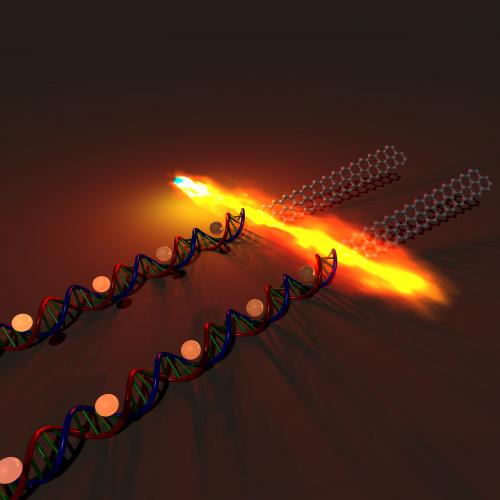DNA Used to Assemble Graphene Transistors


To the right is a honeycomb of graphene atoms. To the left is a double strand of DNA. The white spheres represent copper ions integral to the chemical assembly process. The fire represents the heat that is an essential ingredient in the technique. Credit: Anatoliy Sokolov
Engineers at Stanford have reported using DNA for the very first time to create Graphene transistors. The researchers used the biological properties of DNA to assemble parts of an electronic circuit. Using DNA as a template the researchers assembled graphene into transistor building blocks, overcoming a big hurdle that researchers have faced till.
Silicon based transistors are fast closing in on their shrinkage limits, pushing researchers toward other alternatives. Graphene has the ability to shrink and speed up transistors, while also overcoming heat and other forms of interference. However, so far researchers haven’t been able to figure out a way to mass produce graphene transistors due to their incredibly small size.
The Process
A research team led by Prof. Zhenan Bao at Stanford describe a very unique method of using DNA as a template to arrange graphene molecules. Beginning with a thin layer of silicon as a support surface, bacterial DNA was arranged in straight lines on this support surface. Exposing this DNA to a copper salt solution allowed absorption of copper ions. Heating these copper induced DNA in methane gas sparked a chemical reaction that released carbon atoms that combines to form honeycombs of graphene. The long graphene ribbons formed via controlled growth were used to make working transistors.
The process which has been two years in the making, still has a long way to go as far as large scale manufacturing goes. However, the researchers believe that their method is “highly scalable” and very attractive for industrial adoption.
